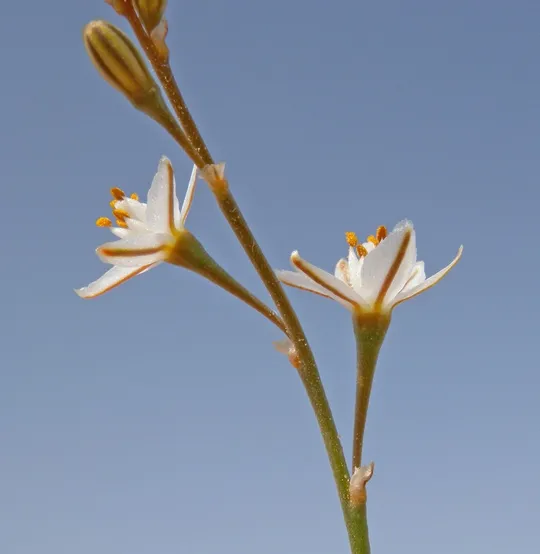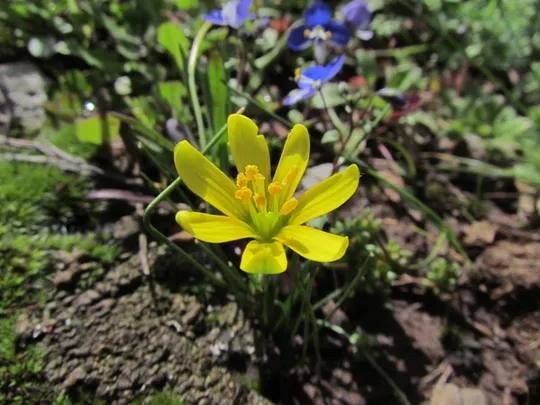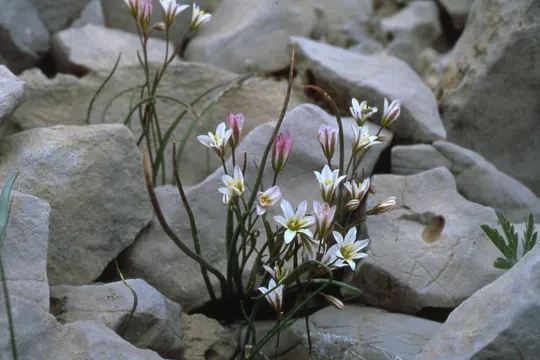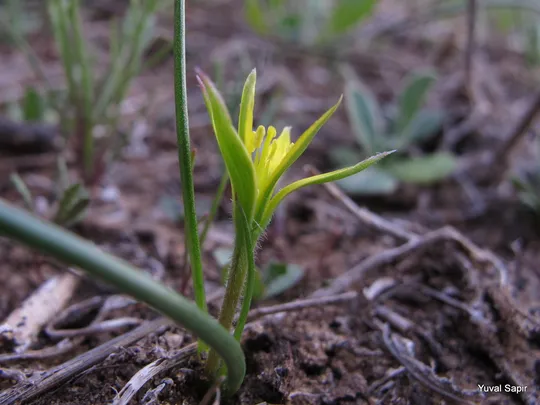Viscid Asphodel, Sticky Asphodel
Asphodelus viscidulus
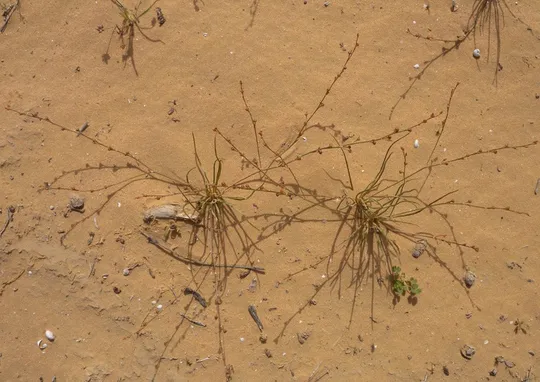
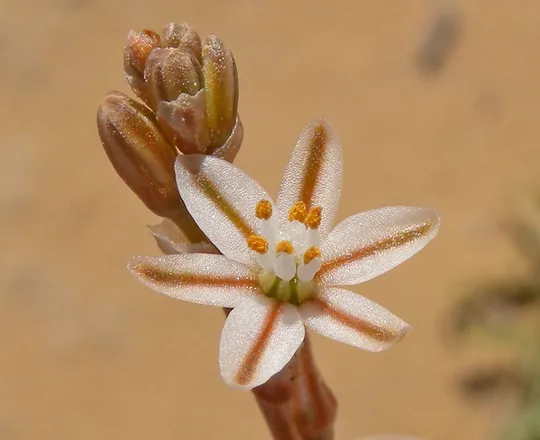
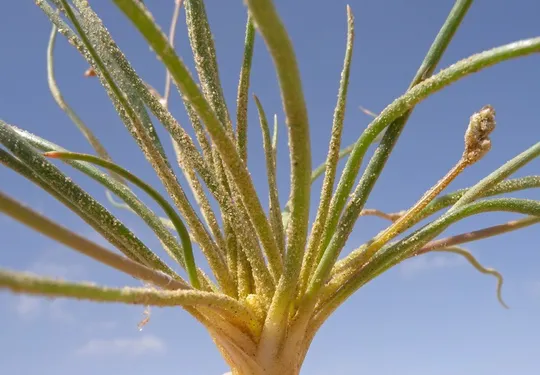
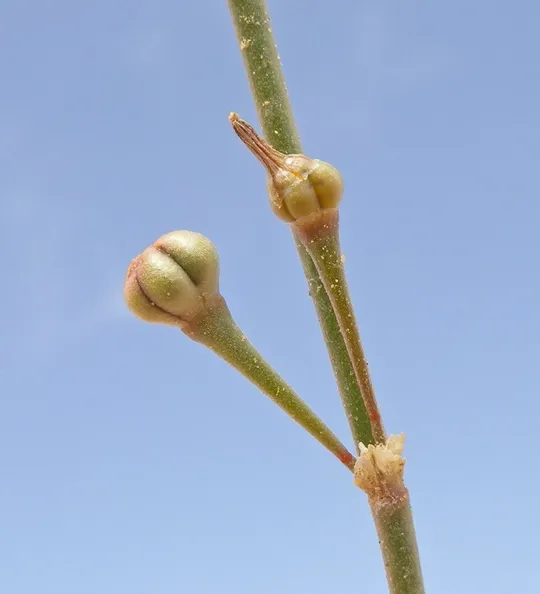
Asphodelus viscidulus now grows in five
desert regions in Israel: the Northern Negev, Southern Negev, Dead Sea, the Arava
and the Elat Mountains. The total number of recorded sites is 13. In the past
most of the collections were from the lower Jordan Valley and the Judean Desert
regions, where the plant is now extinct. The known sites are concentrated in
other regions. In the Dead Sea region it is found north of En Gedi; in the Arava
in Wadi Shezaf; in the southern Negev in Wadi Ramon and at another six sites
reported by Oz Golan and Mimi Ron in 2010 (Ardon Valley, Wadi Haririm, Wadi Holit
and Makhmal Valley); in the Elat Mountains A. viscidulus grows in Wadi Nimra in the Timna area (Dudi Rivner and Mori Chen). A large
population was discovered only recently (2009) in the Northern Negev in the
area between Shivta and Nitsana in the Kelekh
Sinai Nature Reserve.
Sandy plains and sandy wadis in the extreme desert,
usually in areas with less than 60 mm average annual precipitation.
The genus Asphodelus consists of 12 species found around
the Mediterranean Basin, in the Saharan and Arabian deserts and eastwards to
central Asia. The species characteristic of rainier areas are perennial, while
the desert species are mostly annuals. A. viscidulus grows in extremely arid habitats that have long droughts
periods (years), which it survives in the form of dry seeds that germinate only
in rainy years. Monitoring A. viscidulus in the Timna area showed that
it did not germinate for six consecutive years until the winter of 2009. At this
site and at other sites in the Arava it grows together with A.
refractus, a similar and close species, as well as with the more
common A. tenuifolius; no intermediate forms among
the three species were observed.
·
The number of regions and sites where Asphodelus viscidulus grows, is
greater than in the past, before the 1960s. This is undoubtedly the result of more
thorough and comprehensive sampling efforts. However, the plant is apparently no
longer found at its previous sites in the Judean Desert.
·
The largest population of A. viscidulus, which was found
only recently in the Kelekh Sinai
Nature Reserve, numbers thousands
of items.
·
There is concern that prolonged
droughts will lead to local extinctions of A. viscidulus.
·
The species is protected in the Wadi
Shezaf, the Tsinim Cliffs and the Wadi Prat nature reserves. The Keleh Sinai Nature Reserve, where one site is located, is not yet an officially declared
reserve.
·
There is no information available regarding
its global threat status.
Long-term annual surveys and monitoring of Asphodelus
viscidulus should be conducted to confirm the locations of its populations
and to study long-term population trends in the extreme desert conditions in which
they grow. The Kelekh Sinai Nature Reserve should be officially declared.
Asphodelus viscidulus is found
throughout the Arabian Peninsula, in Egypt, southern Israel, southern Jordan,
Iraq and Iran.
Asphodelus
viscidulus is
a rare annual species characteristic of extreme desert conditions, whose
appearance is sporadic. Knowledge regarding the species is minimal and previously
unknown are being discovered. Israel is at the northern limits of its
geographic distribution.
Current Occupancy Map
| 1000 squre meter pixel | 5000 squre meter pixel | 10000 squre meter pixel | |
|---|---|---|---|
| number of observations | 0 | 0 | 0 |
| in total pixels | 0 | 0 | 0 |
| Family | Liliaceae |
| Classification | On the near threatened species list |
| Ecosystem | Extreme Desert |
| Chorotype | Saharo - Arab |
| Conservation Site | Keleh Sinai Nature Reserve near Shivta Junction |
| Rarity |
1
2
6
|
|---|---|
| Vulnerability |
0
2
4
|
| Attractiveness |
0
0
4
|
| Endemism |
0
0
4
|
| Red number |
1
2.6
10
|
| Peripherality | S |
| IUCN category | DD EW EX LC CR EN VU NT |
| Threat Definition according to the red book | Near threatened |
 Based on:
Based on:
